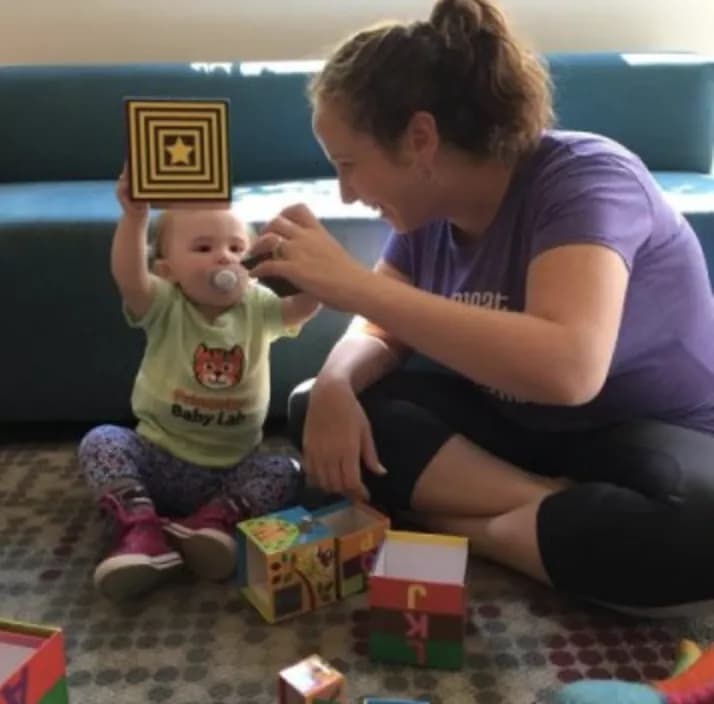
Baby Talk In Any Language: Shifting The Timbre Of Our Voices
When talking with their young infants, parents instinctively use "baby talk," a unique form of speech including exaggerated pitch contours and short, repetitive phrases. Now, researchers reporting in Current Biology on October 12 have found another unique feature of the way mothers talk to their babies: they shift the timbre of their voice in a rather specific way. The findings hold true regardless of a mother's native language.
"We use timbre, the tone color or unique quality of a sound, all the time to distinguish people, animals, and instruments," says Elise Piazza from Princeton University. "We found that mothers alter this basic quality of their voices when speaking to infants, and they do so in a highly consistent way across many diverse languages."
Timbre is the reason it's so easy to discern idiosyncratic voices -- the famously velvety sound of Barry White, the nasal tone of Gilbert Gottfried, and the gravelly sound of Tom Waits -- even if they're all singing the same note, Piazza explains.
Piazza and her colleagues at the Princeton Baby Lab, including Marius Catalin Iordan and Casey Lew-Williams, are generally interested in the way children learn to detect structure in the voices around them during early language acquisition. In the new study, they decided to focus on the vocal cues that parents adjust during baby talk without even realizing they're doing it.
The researchers recorded 12 English-speaking mothers while they played with and read to their 7- to 12-month-old infants. They also recorded those mothers while they spoke to another adult.
After quantifying each mother's unique vocal fingerprint using a concise measure of timbre, the researchers found that a computer could reliably tell the difference between infant- and adult-directed speech. In fact, using an approach called machine learning, the researchers found that a computer could learn to differentiate baby talk from normal speech based on just one second of speech data. The researchers verified that those differences couldn't be explained by pitch or background noise.
The next question was whether those differences would hold true in mothers speaking other languages. The researchers enlisted another group of 12 mothers who spoke nine different languages, including Spanish, Russian, Polish, Hungarian, German, French, Hebrew, Mandarin, and Cantonese. Remarkably, they found that the timbre shift observed in English-speaking mothers was highly consistent across those languages from around the world.
"The machine learning algorithm, when trained on English data alone, could immediately distinguish adult-directed from infant-directed speech in a test set of non-English recordings and vice versa when trained on non-English data, showing strong generalizability of this effect across languages," Piazza says. "Thus, shifts in timbre between adult-directed and infant-directed speech may represent a universal form of communication that mothers implicitly use to engage their babies and support their language learning."
The researchers say the next step is to explore how the timbre shift helps infants in learning. They suspect that the unique timbre fingerprint could help babies learn to differentiate and direct their attention to their mother's voice from the time they are born.
And don't worry, dads. While the study was done in mothers to keep the pitches more consistent across study participants, the researchers say it's likely the results will apply to fathers, too.
Materials provided by Cell Press. Note: Content may be edited for style and length.
Disclaimer: DoveMed is not responsible for the accuracy of the adapted version of news releases posted to DoveMed by contributing universities and institutions.
References:
Piazza et al. (2017). Mothers Consistently Alter Their Unique Vocal Fingerprints When Communicating with Infants. Current Biology. DOI: 10.1016/j.cub.2017.08.074
Related Articles
Test Your Knowledge
Asked by users
Related Centers
Related Specialties
Related Physicians
Related Procedures
Related Resources
Join DoveHubs
and connect with fellow professionals

0 Comments
Please log in to post a comment.